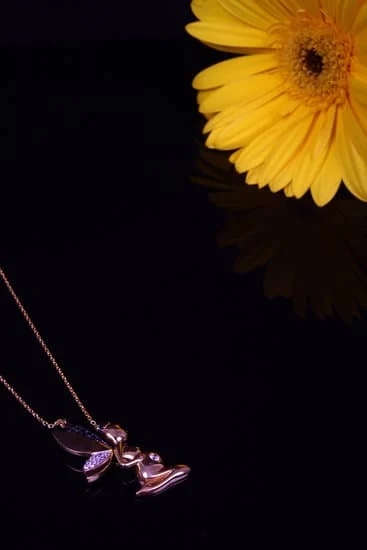Is silver considered fine jewelry? This question has been a topic of debate in the fashion industry for many years. Fine jewelry is synonymous with luxury, elegance, and timeless beauty. It is often associated with precious metals and gemstones, but where does silver fit into this definition?
The use of silver in jewelry making dates back centuries, with civilizations around the world valuing its lustrous and durable qualities. Silver has been adorned by both royalty and commoners, making it a versatile and cherished metal in the history of jewelry.
The characteristics of silver make it an attractive choice for jewelry designers and consumers alike. Its affordability, versatility, and ability to complement a wide range of gemstones have solidified its place in the world of fine jewelry. So what truly distinguishes fine jewelry from fashion jewelry, and how does silver fit into each category? Let’s explore further to understand where silver stands in the debate over what defines fine jewelry.
The History of Silver
Silver has been used in jewelry making for centuries, with its history dating back to ancient civilizations such as Egypt, Mesopotamia, and Greece. The use of silver in jewelry can be traced back to as early as 3000 BC, where it was highly prized for its lustrous appearance and durability. One of the most famous examples of ancient silver jewelry is the treasure trove of artifacts discovered in the tomb of King Tutankhamun, which included intricately designed silver pieces.
Throughout history, silver has been a popular choice for adorning oneself with decorative ornaments due to its malleability and affordability. In medieval times, silver jewelry was often worn by royalty and nobility as a symbol of wealth and status. It was also commonly used in religious ceremonies and was believed to have mystical properties.
Despite being overshadowed by other precious metals such as gold and platinum in more recent times, silver continues to hold a significant place in the world of fine jewelry. Its rich history and cultural significance have cemented its status as a timeless and elegant choice for creating exquisite pieces.
- Examples of Ancient Silver Jewelry
- The Symbolism of Silver in Different Cultures
- Silver Jewelry Techniques Throughout History
The Characteristics of Silver
Silver is a precious metal that has been used in jewelry making for centuries, and its unique qualities make it an attractive choice for creating fine jewelry. One of the key characteristics of silver is its lustrous shine and beautiful color, which can range from bright white to a warm gray tone. This makes silver an eye-catching and elegant choice for creating stunning jewelry pieces that stand out.
Another important characteristic of silver is its malleability, which allows craftsmen to mold and shape it into intricate designs and delicate patterns. This flexibility makes it an ideal material for creating detailed and ornate jewelry pieces that showcase the artistry and skill of the designer. Additionally, silver is also known for its durability, ensuring that jewelry made from this metal will last for generations with proper care.
One of the most appealing qualities of silver is its affordability compared to other precious metals like gold or platinum. This makes it accessible to a wider range of consumers who are looking for high-quality jewelry without the high price tag. Furthermore, silver’s versatility allows it to be paired with a variety of gemstones and other materials, making it a popular choice for both classic and contemporary jewelry designs.
| Characteristic | Description |
|---|---|
| Lustrous Shine | Silver has a beautiful color range from bright white to warm gray |
| Malleability | Allows for intricate designs and delicate patterns in jewelry |
| Affordability | Silver is more affordable compared to other precious metals like gold or platinum |
Fine Jewelry vs Fashion Jewelry
When it comes to distinguishing between fine jewelry and fashion jewelry, it’s important to understand the key differences that set these two categories apart. Fine jewelry is typically crafted from precious metals such as gold, platinum, and silver, and often features high-quality gemstones such as diamonds, sapphires, and emeralds. On the other hand, fashion jewelry is more affordable and tends to be made from non-precious metals like brass or copper, with synthetic or imitation gemstones.
Here are some key distinguishing factors between fine jewelry and fashion jewelry:
- Materials: Fine jewelry is crafted from precious metals like gold, platinum, and silver, while fashion jewelry is made from non-precious metals such as brass or copper.
- Gemstones: Fine jewelry often features high-quality gemstones like diamonds, rubies, and sapphires, while fashion jewelry typically uses synthetic or imitation stones.
- Craftsmanship: Fine jewelry is expertly crafted with attention to detail and precision, while fashion jewelry may not have the same level of craftsmanship.
- Price: Fine jewelry commands a higher price due to the quality of materials and craftsmanship involved, whereas fashion jewelry is more affordable.
So where does silver fit into each category? Silver is considered a precious metal and is often used in the creation of fine jewelry. Its unique luster and versatility make it an attractive choice for designers looking to create timeless pieces with a modern edge.
While silver can also be used in fashion jewelry, its presence in the world of fine jewelry should not be underestimated. The value and appeal of silver as a metal for crafting exceptional pieces cannot be denied.
The Value of Silver Jewelry
Silver has been a popular choice for jewelry making for centuries, and its value in the industry is undeniable. When examining the value of silver jewelry in comparison to other precious metals, it is important to consider various factors that contribute to its worth.
One of the key attributes that make silver a valuable material for jewelry is its affordability. Unlike gold or platinum, silver is more accessible to a wider range of consumers, making it a popular choice for those looking for high-quality yet budget-friendly jewelry options.
In addition to its affordability, silver also possesses intrinsic value due to its durability and luster. Silver is known for its ability to withstand the test of time, making it an ideal material for crafting timeless and long-lasting jewelry pieces. The lustrous shine of silver adds to its appeal, giving jewelry pieces an elegant and sophisticated look that is highly sought after in the fashion industry.
Furthermore, the versatility of silver is another factor that contributes to its value in comparison to other precious metals. Silver can be easily manipulated into intricate designs, making it a favorite among designers who seek to create unique and elaborate pieces. Its malleability allows for a wide range of creative possibilities, resulting in stunning and one-of-a-kind silver jewelry creations that appeal to a diverse audience.
Considering these factors, it is evident that the value of silver jewelry should not be underestimated. While it may be more affordable than other precious metals, its durability, luster, and versatility make it a highly valuable material for crafting fine jewelry that appeals to individuals from all walks of life.
| Factors | Value |
|---|---|
| Affordability | Accessible to a wider range of consumers |
| Durability and Luster | Ideal material for crafting timeless and elegant jewelry pieces |
| Versatility | Easily manipulated into intricate designs which makes it appeal designs unique. |
Designing With Silver
When it comes to designing fine silver jewelry, artisans utilize various techniques to create intricate and exquisite pieces. From traditional methods like hand engraving and filigree work to modern techniques such as electroforming and laser cutting, the art of designing with silver requires a high level of skill and creativity. Each technique adds unique details and textures to the jewelry, showcasing the craftsmanship involved in creating fine silver pieces.
The craftsmanship involved in designing fine silver jewelry is unmatched. Artisans take great care in every step of the process, from selecting the highest quality silver to meticulously crafting each piece by hand. The attention to detail and precision required is a testament to the dedication of these skilled individuals. Whether it’s sculpting silver into delicate filigree patterns or setting gemstones with precision, the craftsmanship involved in creating fine silver jewelry is truly extraordinary.
Creativity in Silver Jewelry Design
Designers constantly push boundaries when it comes to creating innovative and imaginative silver jewelry pieces. From contemporary and minimalist designs to ornate and intricate styles, there is no limit to the creativity that can be expressed through fine silver jewelry.
The versatility of silver allows for endless design possibilities, making it a popular choice for both established luxury brands and emerging designers looking to make their mark in the industry. The combination of creativity and craftsmanship is what sets fine silver jewelry apart and solidifies its place in the world of high-end fashion accessories.
Overall, designing with silver involves an incredible amount of skill, dedication, and creativity. It’s clear that the process showcases both traditional techniques passed down through generations as well as modern innovations that continue to push boundaries within the industry. Fine silversmiths continue to prove that working with this precious metal yields exceptional results that are truly timeless.
Famous Silver Jewelry Pieces
Throughout history, there have been several notable silver jewelry pieces that have left an indelible mark on the industry. From ancient civilizations to modern-day designers, these pieces have not only showcased the beauty of silver but also the creativity and craftsmanship involved in designing fine jewelry.
Ancient Silver Jewelry
One of the most famous silver jewelry pieces is the Oxus Treasure, a collection of ancient Persian artifacts that dates back to the Achaemenid Empire. This treasure trove includes intricately designed silver bowls, vessels, and jewelry that exemplify the exquisite craftsmanship of ancient artisans. The intricate details and level of artistry found in these pieces continue to inspire contemporary designers and collectors.
Modern Silver Jewelry
In more recent times, modern designers have also created iconic silver jewelry pieces that have made a lasting impact on the industry. One such piece is Elsa Peretti’s bean design for Tiffany & Co. which was first introduced in the 1970s. The sleek and simple bean-shaped pendant became an instant classic, showcasing how silver can be transformed into timeless and elegant pieces.
Impact on the Industry
These famous silver jewelry pieces have not only contributed to the elevation of silver as a precious metal but also influenced trends in fashion and luxury items. Their cultural significance and timeless appeal have cemented silver’s status in the world of fine jewelry, proving that it is indeed considered fine jewelry in its own right. Whether through ancient artifacts or modern designs, these notable silver jewelry pieces continue to shape and define the industry today.
Conclusion
In conclusion, the debate over whether silver is considered fine jewelry has been ongoing for many years. While traditionally, fine jewelry has been associated with precious metals like gold and platinum, there is growing recognition of the beauty and value of silver in the world of fashion and luxury items. The unique characteristics of silver, such as its affordability, durability, and versatility, make it an attractive choice for both designers and consumers alike.
Silver jewelry has a rich historical significance, with its use dating back to ancient civilizations. Its timeless appeal continues to make it a popular choice for those seeking classic yet contemporary pieces. The craftsmanship involved in designing fine silver jewelry showcases the creativity and skill of artisans who continue to push the boundaries of traditional jewelry-making techniques.
Despite being more affordable than gold or platinum, silver jewelry still holds significant value. It offers a more accessible option for those looking to invest in quality pieces without compromising on style and elegance. As the fashion industry continues to evolve, so does our perception of what constitutes fine jewelry – and silver undoubtedly holds its place as a sought-after metal for creating exquisite jewelry pieces that stand the test of time.
Frequently Asked Questions
Is Sterling Silver Considered Fine Jewelry?
Sterling silver is considered fine jewelry due to its high quality and durability. While it may not be as valuable as gold or platinum, sterling silver is still highly prized in the jewelry industry for its brilliant shine and timeless appeal.
What Counts as Fine Jewelry?
Fine jewelry typically includes pieces that are made with precious metals like gold, platinum, and sterling silver. It also often features gemstones such as diamonds, rubies, sapphires, and emeralds. Fine jewelry is known for its craftsmanship, attention to detail, and overall high quality.
What Metals Are Considered Fine Jewelry?
Metals commonly considered fine jewelry include gold (in various karats), platinum, and sterling silver. These metals are valued for their beauty, rarity, and ability to withstand the test of time. Each metal has its own unique characteristics that make it a popular choice for creating exquisite fine jewelry pieces.

Welcome to my jewelry blog! My name is Sarah and I am the owner of this blog.
I love making jewelry and sharing my creations with others.
So whether you’re someone who loves wearing jewelry yourself or simply enjoys learning about it, be sure to check out my blog for insightful posts on everything related to this exciting topic!





